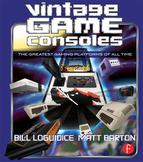As the 1980s wore on, the industry stabilized into its present model of strong first-party hardware and software supplemented with key—usually officially licensed—third-party support. While competition was still fierce among platforms, this consolidation allowed all parties involved with a particular system to both have a stake in and benefit from its success. It allowed the industry to move past the Great Videogame Crash, ensuring a smoother, more sustainable growth curve, and preventing future bubbles from popping.
The old guard of Atari and Commodore would soon lose relevance, vanishing completely at the start of Generation Three. In the computer market, only Apple’s Macintosh could withstand Microsoft’s DOS and later Windows onslaught. The rise of Linux and other free operating systems in the 1990s seemed to pose a grave threat to both, but never managed to reach beyond niche communities and, more substantially, the server market, although it would eventually see mass adoption in the form of Google’s Android operating system. In the console world, newcomers Nintendo and Sega would quickly usurp Atari as the king of videogames. The vicious marketing campaigns between these Japanese giants dominated the fanboy battles in American popular culture and playgrounds everywhere.
Other parts of the world evolved more slowly, with England and other European countries still favoring price over performance. In particular, this meant more sustained competition within the personal computer scene, and Atari and Commodore remained active there far longer than in North America. The vibrancy of the European market in this generation also birthed a whole army of “bedroom coders” whose skills would soon be appreciated the world over, giving the Americans a run for their money as the crème de la crème programmers.
It was also during this time that Japan asserted its own homegrown engineering and programming talents, eventually coming to supplant the US as the world leader in videogames. This prominence was thanks in part to Nintendo’s release of the Game Boy. This release kicked off a series of Nintendo systems that continue to dominate the portable videogame market it established, despite facing an ever increasing amount of more technologically advanced competition.
While the Japanese market continued to support its own platforms, some of which were commercially irrelevant or unavailable outside their home country, markets started to merge by the end of this generation. Indeed, by Generation Three, platforms targeted to the world market would be the rule rather than the exception.
This generation also marked the rise of optical discs as the storage medium of choice for the next generation, proving crucial to enabling cost effective use of increasingly sophisticated hardware and their subsequently more demanding game engines. However, CD-ROM technology was still in its primitive, formative stages, with developers struggling to find ways to fill their relatively vast capacities with worthwhile content. As with laserdisc arcade games like Dragon’s Lair, the initial answer to filling all this space came not in the form of larger game worlds or massive amounts of content, but in digitized reels of marginally interactive video (FMV, or Full Motion Video games). It seemed that developers and publishers of the time thought the more video, the better, with little regard to niggling details like quality, resolution, set design, or acting. It seemed if it was video and there was space on the disc, in it went.
Much like the short-lived laserdisc craze that faltered at the start of this generation, these early video-centric efforts on CD-ROM would also start to peter out at the beginning of the next generation, morphing into a more balanced usage of the available storage space. Eventually, of course, even the CD-ROM wouldn’t be spacious enough. The phenomenon of game developers suddenly having orders of magnitude more storage space to work with is comparable, perhaps, to the revolutions in the film and television industry when sound and later color was introduced. These punctuations in the equilibrium of technological evolution, so to speak, gave small start-up companies such as Cyan (Myst) and Trilobyte (The 7th Guest) the opportunities to compete successfully with Electronic Arts and other established houses.
The second generation of the videogame industry was a time of upheaval, with a changing of the guard and revolutionary innovations like the CD-ROM and Nintendo Game Boy. It also witnessed plenty of evolutionary dead-ends like the short-lived full-motion video craze. If the Great Videogame Crash was the asteroid that killed the Atari and Commodore dinosaurs, Nintendo and Microsoft were the new mammals on the block. The impact these juggernauts made during this era, for better or worse, is still very much with us today.
